
 Hyde currently employs approximately 1,100 people across London, the South East and Peterborough. Our staff play a fundamental role in our vision to provide a great home for everyone, and we’re committed to building a more diverse and inclusive workforce that is reflective of the communities we work in.
Hyde currently employs approximately 1,100 people across London, the South East and Peterborough. Our staff play a fundamental role in our vision to provide a great home for everyone, and we’re committed to building a more diverse and inclusive workforce that is reflective of the communities we work in.
This report looks at our current gender pay gap and helps us identify the work we still need to do. The data provided is accurate as of April 2020.
Our results
The following calculations make up the information required for statutory reporting.
Mean
The mean shows the difference in average hourly pay between men and women.
Our mean gender pay gap is: 14.1% (lower for women)
Median
The median shows the difference between the middle paid woman and middle paid man.
Our median gender pay gap is: 5.5% (lower for women)
Pay quartiles
This is where all the salaries are sorted by size and divided into equal quarters. The pie charts below show how men and women are spread throughout the organisation by hourly pay, from lowest to highest:
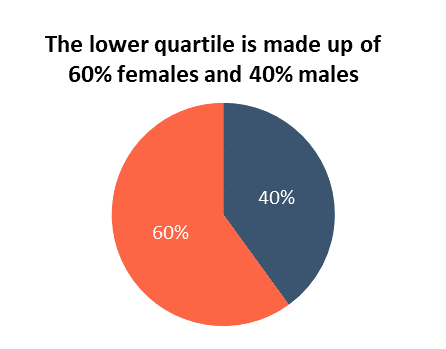
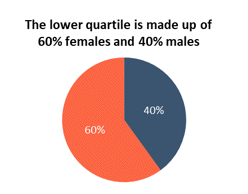
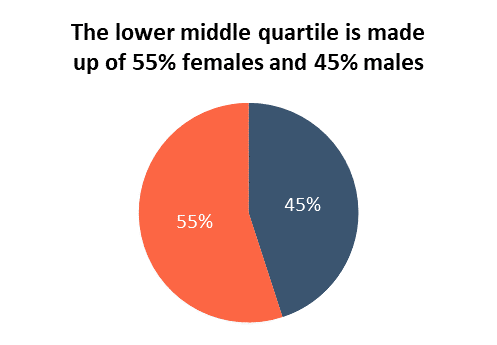
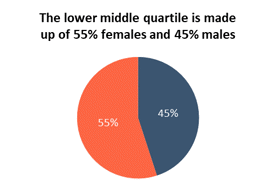
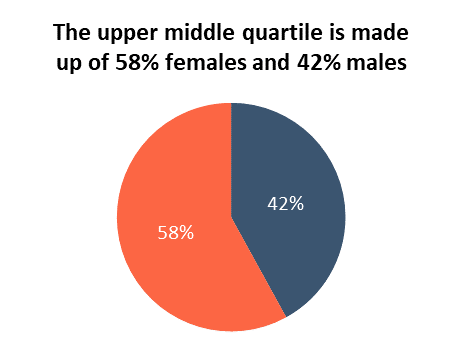
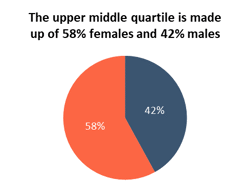
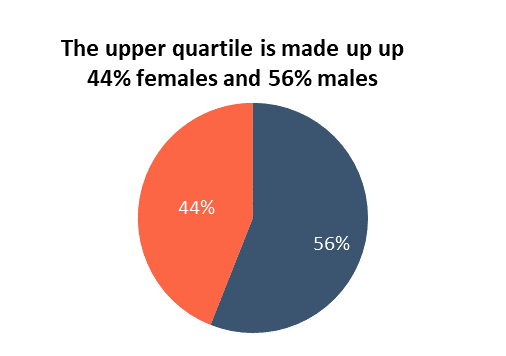
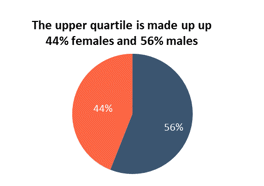
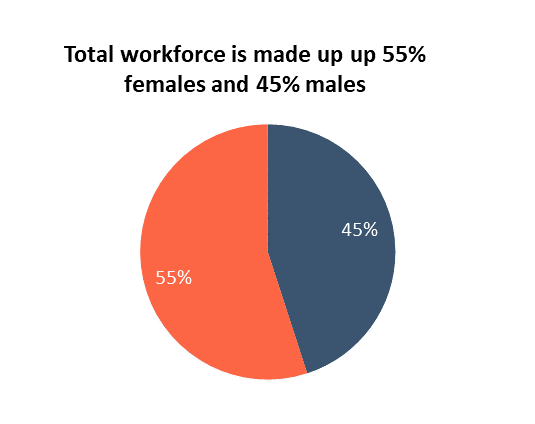
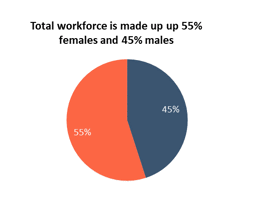
Gender bonus pay gap
Our mean gender bonus gap is 11.3%.
Our median gender bonus gap is 0%.
The proportion of employees who receive a bonus is:


 Understanding our gender pay and bonus gap
Understanding our gender pay and bonus gap
We have seen an increase to our mean gender pay gap from 10.1% to 14.1% since the 2019 reporting date. In the same period Hyde’s median gender pay gap has increased by 2.9% to 5.5%. This was expected as the proportion of women at the most senior grades decreased between the 2019 and 2020 reporting dates.
Hyde continues to have a gender pay gap and our analysis indicates that this remains due to females being under-represented at the more senior levels and not from men and women being paid differently for the same or equivalent work.
The proportion of females in Heads of Service, Director roles and Executive Leadership Team decreased from 41%, 56% and 75% respectively at the 2019 reporting date to 40%, 50% and 20% at the 2020 reporting date.
The mean gender bonus gap shows that women are paid 11.3% less than men, and the median gender bonus gap is 0%. The mean bonus gap is being driven by the higher proportion of men in the senior levels who participate in the senior staff bonus which is a higher percentage of salary. There is however a higher proportion of women overall receiving a bonus compared to men – 91.4% and 82.2% respectively.
Our ethnicity pay gap
It isn't currently mandatory to measure the ethnicity pay gap, however, we have been making the calculations since 2018 in order to identify and address any issues.
We have used the same calculation principles as the gender pay reporting and excluded employees who have decided not to share their ethnicity.
Our mean ethnicity pay gap is: 16.6% (lower for BAME employees)
Our median ethnicity pay gap is: 6.5% (lower for BAME employees)
Pay quartiles
The pie charts below show how white and BAME employees are spread throughout the organisation by hourly pay, from lowest to highest (this excluded those where ethnicity is not stated).


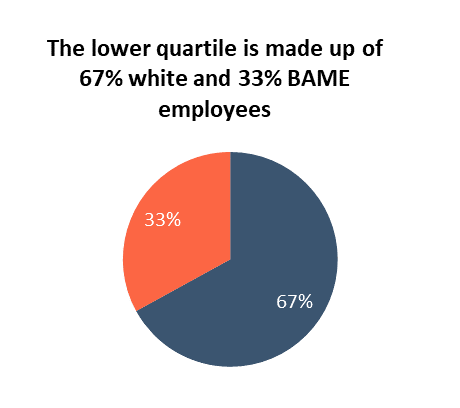
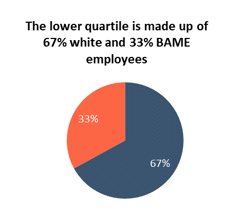
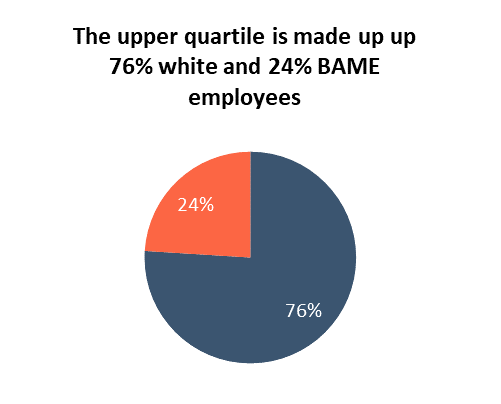
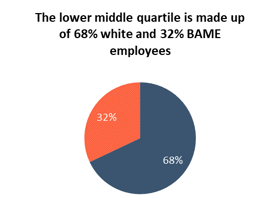
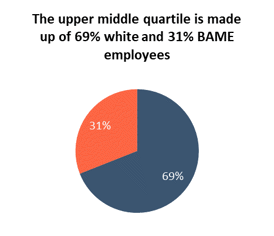
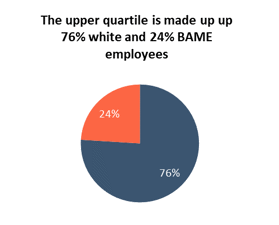
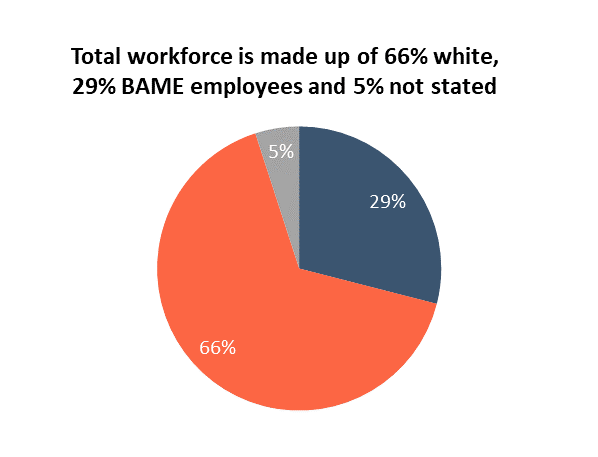
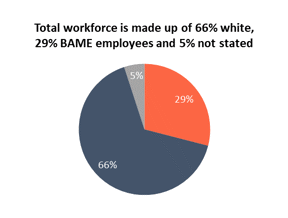
Ethnicity bonus pay gap
Our mean ethnicity bonus gap is 44.5%.
Our median ethnicity bonus gap is 0%.
The proportion of employees who receive a bonus is:

Understanding our ethnicity pay and bonus gap
We have also seen an increase to our mean and median ethnicity pay gaps. Hyde’s mean ethnicity pay gap has increased by 0.9% to 16.6% and the median has increased by 1% to 6.5% since the 2019 reporting date.
Our results show that BAME employees make up 29% of our staff base, yet we have proportionally fewer BAME staff in the higher paid senior roles, with only 8.6% of Heads of Service, Directors and Executive team being BAME - an increase of 1.8% since 2019. This under-representation at the more senior levels is a key factor in Hyde’s ethnicity and bonus pay gap.
Analysis shows that of the internal promotions between the 2019 and 2020 reporting dates and reviewing those employees identified in the Hyde talent pool there was a representative proportion of BAME employees.
The mean ethnicity bonus gap shows that BAME employees are paid 44.5% less than white employees but the median gender bonus gap is 0%. The mean bonus gap is being driven by the higher proportion of white employees in the senior levels who participate in the senior staff bonus which is a higher percentage of salary.
How we’re looking to close our gender and ethnicity pay gaps
Since reporting in 2019, we have undertaken several activities that focus on closing the gender and ethnicity pay gaps:
- Continued to encourage that all shortlists contain a mix of male and female candidates and are as diverse as possible
- Starting salaries, in-year salary increases, performance reviews and representation of women and BAME employees within talent programmes have been monitored
- Unconscious bias has been included in the content of leadership programmes
- Set up Career Boost Workplace group for the wider talent pool which encourages people to take responsibility for their own career but signposts useful resources such as webinars
- Four Hyde staff have successfully been selected to participate in the G15 Accelerate programme which is a leadership programme for talented BAME middle managers who wish to progress to more senior roles
- Six Hyde staff have been included on the G15 BAME speakers register.
Diversity & inclusion is a key focus of our 2020-25 People and Culture Strategy, with clear objectives to ensure that we're building a diverse workforce at all levels of the organisation, and meet the diverse needs of our customers and communities.
Through the strategy we plan to implement the following to address the gender and ethnicity pay gap:
Recruitment
- Implement an applicant tracking system to enable monitoring and reporting on application, interview and appointment data by gender and ethnicity
- Explore diversity targeted recruitment campaigns using social media and other channels
- Introduce new requirements for diverse interview panels
Data and monitoring
- Continue with current monitoring of starting salaries, in-year increases, performance reviews and talent programmes to check for any unconscious bias and ensure fair representation
- Producing an HR D&I scorecard to include tracking of promotions/progressions
- Talent pool decisions to be scrutinised for unconscious bias as part of moderation
- Review key people practices, including pay and grading, for unconscious bias
- Share directorate level gender and ethnicity reports.
Training
- Review the mandatory D&I e-learning programme
- Deliver an unconscious bias/awareness programme for the executive team, senior leaders and people managers
Peter Denton

Chief Executive Officer
